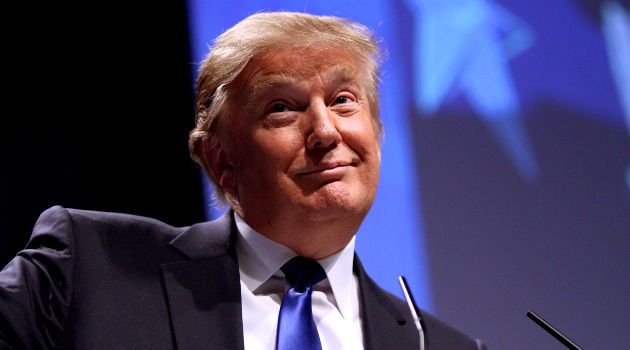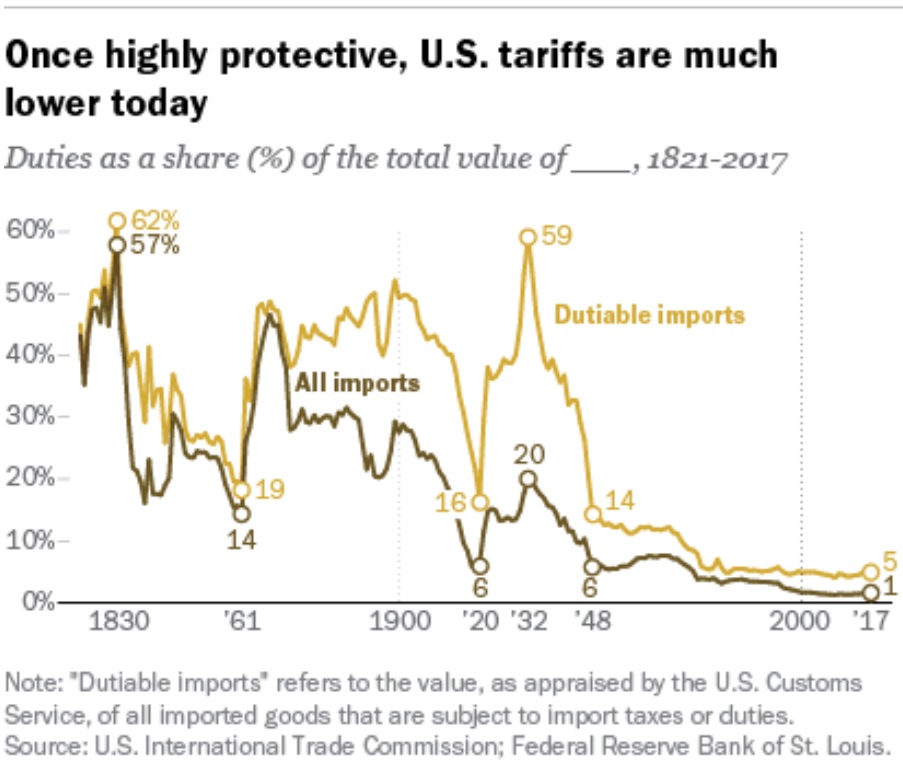Six years ago, I wrote a column explaining why America’s growth in the 1800s was not because of punitive trade taxes.
Let’s look at that issue again, starting with this video from Johan Norberg.
I’m motivated to revisit the topic because Trump recently said he would like to get rid of the income tax and replace it with tariffs.
Given my disdain for the income tax, I want to applaud this plan.
However, given the fact that Trump doesn’t have a specific proposal, it’s probably best characterized as an off-the-cuff statement rather than a plan.
Regardless, let’s start our analysis by looking at some historical data.
Trump is right that the United States used to impose high taxes on imports. The chart from Pew Research shows that America imposed very heavy trade barriers at different points, especially in the last half of the 1800s.
Trump also is right that revenues from trade taxes used to the main way of financing the federal government.
Here’s a chart showing how Washington has generated revenue over the past two hundred-plus years.

The yellow-ish area is excise taxes as well as trade taxes, but the main takeaway is that there were no income taxes for much of America’s history. Or payroll taxes.
Everyone agrees on these numbers.
Even the New York Times, as shown by these excerpts from a 2018 story.
…at certain points in history, tariffs did provide for a vast majority of government funding. Before the War of 1812, tariffs generated about 90 percent of the federal government’s revenue, according to congressional records. …But that is mostly because the size of the federal government was a fraction of what it would become in later years… At that time in early United States history, the nascent government didn’t need much more than that. …expenditures ballooned during the Civil War… In the decades after the war, tariffs generated less than half of government revenue
So far, it seems like Trump may have stumbled across a good idea.
And, in theory, he has. The tariffs America had in the 1800s almost surely would be far less damaging than the current tax system, with its high rates, double taxation, and distorting loopholes.
But there’s one itsy-bitsy problem.
Actually, it’s not a small problem. It’s a $6 trillion-plus problem.
The only way to go back to the tax system of the 1800s would be if we also went back to the spending policy of the 1800s. Here’s a chart I first shared in 2015. As you can see, the burden of peacetime federal spending in the 1800s used to be trivially small, averaging about 3 percent of economic output.

When government was that small, there was no welfare state. No Social Security. No Medicare. No Medicaid. No Obamacare. No food stamps.
No Department of Transportation. No Department of Education. No Department of Energy. No Department of Housing and Urban Development.
The list could continue for a long time.
The bottom line is that we can go back to the tax system of the 1800s, but that implies that Javier Milei is America’s next president, not Donald Trump or Joe Biden.
———
Image credit: Gage Skidmore | CC BY-SA 2.0.



